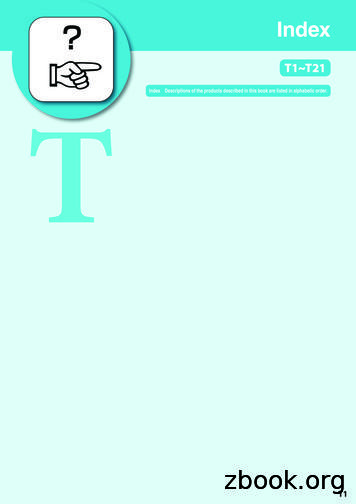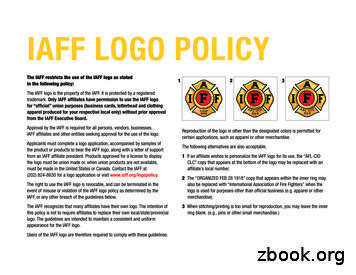Ling573 Class13 Ae Flat - University Of Washington
Answer ExtractionNLP Systems and ApplicationsLing573May 13, 2014
Answer Extraction Goal: Given a passage, find the specific answer in passage Go from 1000 chars - short answer span Example: Q: What is the current population of the United States? Pass: The United States enters 2011 with a populationof more than 310.5 million people, according to a U.S.Census Bureau estimate. Answer: 310.5 million
Challenges ISI’s answer extraction experiment: Given: Question: 413 TREC-2002 factoid questions Known answer type All correct answer passages Task: Pin-point specific answer string Accuracy: Systems: 68.2%, 63.4%, 56.7% Still missing 30% answers Oracle (any of 3 right): 78.9% (20% miss)
Basic Strategies Answer-type matching: Build patterns for answer locations Restrict by answer type Information for pattern types: Lexical: word patterns Syntactic/structural: Syntactic relations b/t question and answer Semantic: Semantic/argument relations b/t question and answer Combine with machine learning to select
Pattern Matching Example Answer type: Definition Answer type: Birthdate Question: When was Mozart born?Answer: Mozart was born on .Pattern: QP was born on AP Pattern: QP ( AP - .)
Basic Strategies N-gram tiling: Typically as part of answer validation/verification Integrated with web-based retrieval Based on retrieval of search ‘snippets’ Identifies frequently occurring, overlapping n-grams Of correct type
N-gram ardold n-gramsMr CharlesScore 45Mr Charles Dickenstile highest-scoring n-gramN-GramsN-GramsRepeat, until no more overlap7
Automatic Pattern Learning Ravichandran and Hovy 2002; Echihabi et al, 2005 Inspiration (Soubottin and Soubottin ’01) Best TREC 2001 system: Based on extensive list of surface patterns Mostly manually created Many patterns strongly associated with answer types E.g. NAME ( DATE - DATE ) Person’s birth and death
Pattern Learning S & S ‘01 worked well, but Manual pattern creation is a hassle, impractical Can we learn patterns? Supervised approaches: Not much better, Have to tag training samples, need training samples Bootstrapping approaches: Promising: Guidance from small number of seed samples Can use answer data from web
Finding Candidate Patterns For a given question typeIdentify an example with qterm and atermSubmit to a search engineDownload top N web docs (N 1000)Select only sentences w/qterm and atermIdentify all substrings and their counts Implemented using suffix trees for efficiency Select only phrases with qterm AND aterm Replace qterm and aterm instances w/generics
Example Q: When was Mozart born? A: Mozart (1756 – Qterm: Mozart; Aterm: 1756 The great composer Mozart (1756–1791) achieved fame Mozart (1756–1791) was a genius Indebted to the great music of Mozart (1756–1791) Phrase: Mozart (1756-1791); count 3 Convert to : Name ( ANSWER
Patterns Typically repeat with a few more examples Collect more patterns: E.g. for Birthdate a. born in ANSWER , NAME b. NAME was born on ANSWER ,c. NAME ( ANSWER d. NAME ( ANSWER - ) Is this enough? No – some good patterns, but Probably lots of junk, too; need to filter
Computing PatternPrecision For question type:Search only on qtermDownload top N web docs (N 1000)Select only sentences w/qtermFor each pattern, check if a) matches w/any aterm; Co b) matches/w right aterm: Ca Compute precision P Ca/Co Retain if match 5 examples
Pattern Precision Example Qterm: Mozart Pattern: NAME was born in ANSWER Near-Miss: Mozart was born in Salzburg Match: Mozart born in 1756. Precisions: 1.0 NAME ( ANSWER - ) 0.6 NAME was born in ANSWER .
Nuances Alternative forms: Need to allow for alternate forms of question or answer E.g. dates in different formats, full names, etc Use alternate forms in pattern search Precision assessment: Use other examples of same type to compute Cross-checks patterns
Answer Selection by Pattern Identify question types and terms Filter retrieved passages, replace qterm by tag Try to match patterns and answer spans Discard duplicates and sort by pattern precision
Pattern Sets WHY-FAMOUS1.0 ANSWER NAME called1.0 laureate ANSWER NAME 1.0 by the ANSWER , NAME ,1.0 NAME - the ANSWER of1.0 NAME was the ANSWER of BIRTHYEAR1.0 NAME ( ANSWER - )0.85 NAME was born on ANSWER ,0.6 NAME was born in ANSWER 0.59 NAME was born ANSWER 0.53 ANSWER NAME was born
Results Improves, though better with web data
Limitations & Extensions Where are the Rockies? .with the Rockies in the background Should restrict to semantic / NE type London, which ., lies on the River Thames QTERM word* lies on ANSWER Wildcards impractical Long-distance dependencies not practical Less of an issue in Web search Web highly redundant, many local dependencies Many systems (LCC) use web to validate answers
Limitations & Extensions When was LBJ born? Tower lost to Sen. LBJ, who ran for both the Requires information about: Answer length, type; logical distance (1-2 chunks) Also, Can only handle single continuous qterms Ignores case Needs handle canonicalization, e.g of names/dates
Integrating Patterns II Fundamental problem: What if there’s no pattern? No pattern - No answer!!! More robust solution: Not JUST patterns Integrate with machine learning MAXENT!!! Re-ranking approach
Answering w/MaxentMexp[ λm fm (a,{a1, a2 ,.aA }, q)]m 1MP(a {a1, a2 ,.aA }, q) Ma"exp[ λm fm (a",{a1, a2 ,.aA }, q)]m 1 a argmax[ λm fm (a,{a1, a2 ,.aA }, q)]am 1
Feature Functions Pattern fired: Binary feature Answer frequency/Redundancy factor: # times answer appears in retrieval results Answer type match (binary) Question word absent (binary): No question words in answer span Word match: Sum of ITF of words matching b/t questions & sent
Training & Testing Trained on NIST QA questions Train: TREC 8,9; Cross-validation: TREC-10 5000 candidate answers/question Positive examples: NIST pattern matches Negative examples: NIST pattern doesn’t match Test: TREC-2003: MRR: 28.6%; 35.6% exact top 5
Noisy Channel QA Employed for speech, POS tagging, MT, summ, etc Intuition: Question is a noisy representation of the answer Basic approach: Given a corpus of (Q,SA) pairs Train P(Q SA) Find sentence with answer as Si,Aij that maximize P(Q Si,Aij)
QA Noisy Channel A: Presley died of heart disease at Graceland in 1977, and. Q: When did Elvis Presley die? Goal: Align parts of Ans parse tree to question Mark candidate answers Find highest probability answer
Approach Alignment issue: Answer sentences longer than questions Minimize length gap Represent answer as mix of words/syn/sem/NE units Create ‘cut’ through parse tree Every word –or an ancestor – in cut Only one element on path from root to wordPresley died of heart disease at Graceland in 1977, and.Presley diedPPPPin DATE, and.When did Elvis Presley die?
Approach (Cont’d) Assign one element in cut to be ‘Answer’ Issue: Cut STILL may not be same length as Q Solution: (typical MT) Assign each element a fertility 0 – delete the word; 1: repeat word that many times Replace A words with Q words based on alignment Permute result to match original Question Everything except cut computed with OTS MT code
Schematic Assume cut, answer guess all equally likely
Training Sample Generation Given question and answer sentences Parse answer sentence Create cut s.t.: Words in both Q & A are preservedAnswer reduced to ‘A ’ syn/sem class labelNodes with no surface children reduced to syn classKeep surface form of all other nodes 20K TREC QA pairs; 6.5K web question pairs
Selecting Answers For any candidate answer sentence: Do same cut process Generate all candidate answer nodes: Syntactic/Semantic nodes in tree What’s a bad candidate answer? Stopwords Question words! Create cuts with each answer candidate annotated Select one with highest probability by model
Example Answer Cuts Q: When did Elvis Presley die? SA1: Presley died A PP PP PP, and SA2: Presley died PP A PP PP, and . SA3: Presley died PP PP in A DATE, and Results: MRR: 24.8%; 31.2% in top 5
Error Analysis Component specific errors: Patterns: Some question types work better with patterns Typically specific NE categories (NAM, LOC, ORG.) Bad if ‘vague’ Stats based: No restrictions on answer type – frequently ‘it’ Patterns and stats: ‘Blatant’ errors: Select ‘bad’ strings (esp. pronouns) if fit position/pattern
Combining Units Linear sum of weights? Problematic: Misses different strengths/weaknesses Learning! (of course) Maxent re-ranking Linear
Feature Functions 48 in total Component-specific: Scores, ranks from different modules Patterns. Stats, IR, even QA word overlap Redundancy-specific: # times candidate answer appears (log, sqrt) Qtype-specific: Some components better for certain types: type mod Blatant ‘errors’: no pronouns, when NOT DoW
Experiments Per-module reranking: Use redundancy, qtype, blatant, and feature from mod Combined reranking: All features (after feature selection to 31) Patterns: Exact in top 5: 35.6% - 43.1% Stats: Exact in top 5: 31.2% - 41% Manual/knowledge based: 57% Combined: 57%
The great composer Mozart (1756–1791) achieved fame ! Mozart (1756–1791) was a genius ! Indebted to the great music of Mozart (1756–1791) ! Phrase: Mozart (1756-1791); count 3 ! Convert to : Name ( ANSWER Patterns ! Typically rep
10 My 25 11 June 4 Tover Tower Tower Air Tower Tower Tower Air Tower 2WMl (hm Air--viii-i Firjne Area Frenchman Flat FrenchmanFlat Frenchman Flat Frenchman Flat Frenchman Flat Yucca Flat Yucca Flat Yucca Flat Yucca Flat Yucca Flat Yucca Flat Yucca Flat Frenchman Flat Yucca Flat Yucca Flat Y
Flat 1 Ground 4-bed 197 2,120 Flat 2 Ground 3-bed 161 1,733 Flat 3 1st 1-bed 45 484 Flat 4 1st 1-bed 50 538 Flat 5 1st 1-bed 56 603 Flat 6 1st 1-bed 50 538 Flat 7 2nd 1-bed 51 549 Flat 8 2nd 1 bed 50 538 Flat 9 2nd 1-bed 56 603 Flat 10 2nd 1-bed 50 538 Total 766 8,245 Scheme ref: P2017/2080/PRA Net Saleable Areas: UNIT FLOOR BEDS NSA SQ. M. NSA .
Flat Roof Board 200 0.034 90 200 Flat Roof Board 250 0.034 100 250 Flat Roof Board 300 0.033 120 300 Flat Roof Board 350 0.033 140 350 Flat Roof Board 400 0.033 160 400 Flat Roof Board 500 0.033 190 500 Flat Roof Board HP 150 0.031 70 150 Example Point Load Calculation Air Handling Unit -2000kg Square Spacer Pads -300 x 300mm x 4No
2ZDF -KCD L47 Solid Drill (Diamond Coated) 2ZDK L62 Flat Bottom Drill 2ZDK HP-1.5D L50,L51 Flat Bottom Drill 2ZDK HP-1.5D-LS L52,L53 Flat Bottom Drill 2ZDK HP-3D L54,L55 Flat Bottom Drill 2ZDK HP-3D-OH L56,L57 Flat Bottom Drill 2ZDK S L60,L61 Flat Bottom Drill 2ZDK S-P L60 Flat Bottom Drill
i-IV (C minor, F major) The Doors, ‘Riders on the Storm’. Phrygian C D flat E flat F G A flat B flat Minor, with flattened second. Good for historical or mythological settings. i-bII (C minor, D flat major) Fellowship of the Ring, Prologue. Phrygian dominant C D flat E F G A flat B fl
Flat gold and black logo Flat red and black logo Flat black and white logo U.S. and Canada logo In black and white applications, use the flat black and white logo. In one color applications, such as decals, use the flat gold and black logo or flat red and black logo. x is equal to half
PRACTICE EXERCISES Write the indicated accidental to the left of the note: flat natural sharp flat double sharp natural double flat sharp Write the note names: Write the note in two different registers, using ledger lines when necessary (there may be more than one solution): F sharp E C sharp D flat A flat G double sharp B flat A double sharp
Copyright 2013-2014 by Object Computing, Inc. (OCI). AngularJS ui-router All rights reserved. State Configuration . template, templateUrl or templateProvider .























